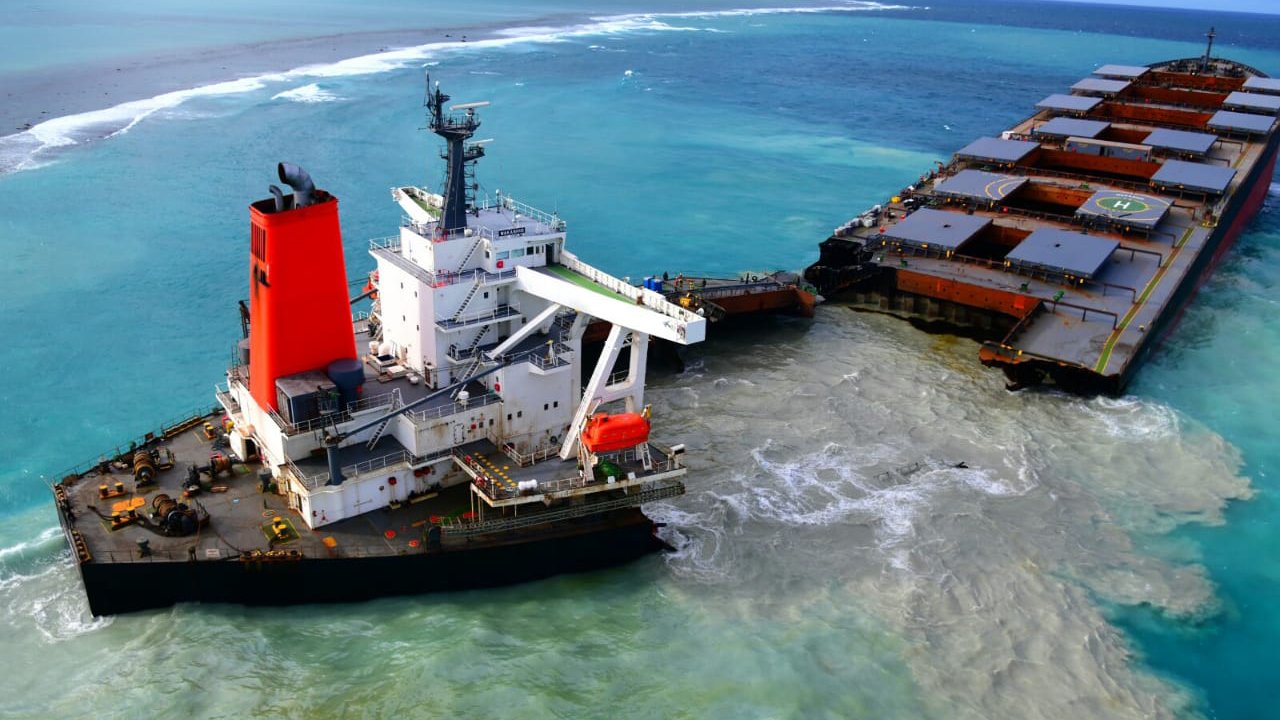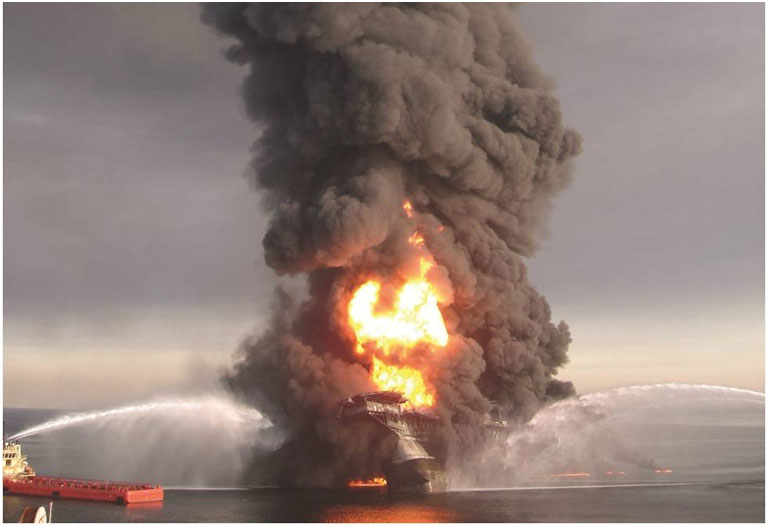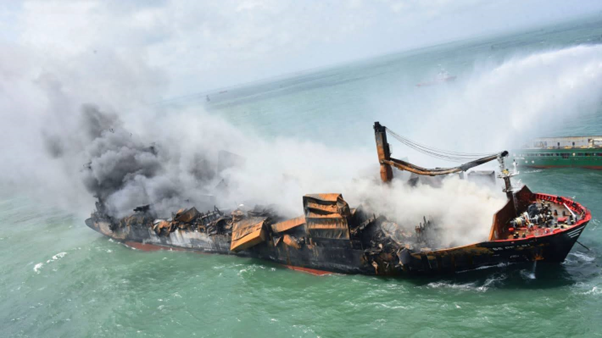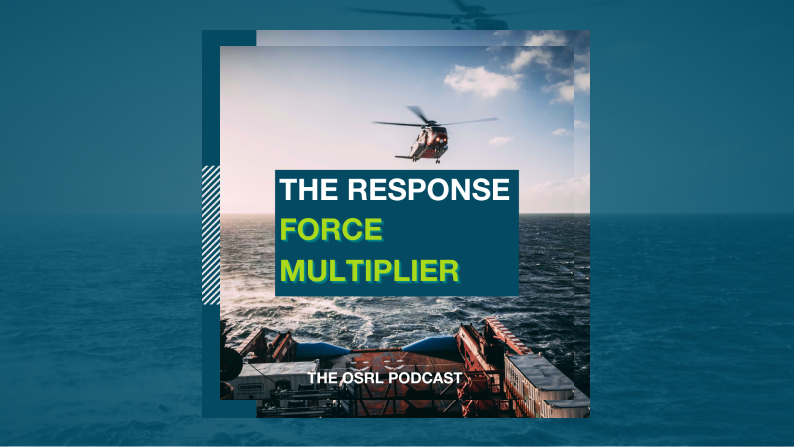A Revolution in Marine Fuels: Five Behaviour Characteristics of LSFO Responders Need to Know
The topic of Low Sulphur Fuel Oil (LSFO) was thrust into the spotlight in July 2020 when the MV Wakashio vessel ran aground in Mauritius. At the time journalists noted that this fuel is relatively new to the market, some referring to it as a ‘Frankenstein fuel’ and so in this article, we look at what we know collectively about LSFOs within the oil spill response industry, and what responders need to be aware of when potentially dealing with future LSFO incidents.
Over 30 years ago, when I was serving on oil tankers in the UK Merchant Navy, we concerned ourselves with only two types of marine fuel: Fuel Oil (FO) and Marine Diesel Oil (MDO). FO represented the vast majority of fuel used for long ocean passages. It was black, syrupy-thick and required heating before being injected into a ship’s boilers or directly into the engine. These vessels also used the lower viscosity MDO at the beginning and end of ocean passages, specifically for manoeuvring in and out of port. It was essential to have the fuel system primed with MDO when the engine was stopped (i.e. in port) to guard against issues when restarting.
In the years I have been ashore, a raft of emission control regulations has been developed and implemented by the Marine Environment Protection Committee of International Maritime Organization (IMO). Through the Organization, Member States have rightly sought to reduce the atmospheric pollution associated with the use of these traditional marine fuels in operational consumption which, as we now know, have four principal detrimental components:
- Sulphur Oxide (SOX)
- Nitrogen Oxides (NOX)
- Volatile Organic Compounds (VOCs)
- Particulate Matter (PM)
Ship-borne fuel combustion emissions may contribute to climate change. In the period 2007–2012, annual greenhouse gas emissions from shipping amounted to approximately 1000 Mt of CO2 representing about 3% of global man-made emissions (IMO, 2015). Reducing this burden is important in terms of the Paris Agreement commitments and we can expect further regulations in the future in the ongoing drive to decarbonise shipping.
Reducing sulphur emissions from ships, however, is primarily designed to protect human health from undesirable respiratory effects. Indeed, 40% of the world’s population live on or near the coast and could be at risk from the adverse effects of atmospheric pollution from ships.
The Global Sulphur Cap is the most recent emission control regulations introduced by IMO. The cap limits the sulphur content to 0.5% and came into force on 1st January 2020. Additionally, ships that trade within certain designated coastal regions defined as Emission Control Areas (ECAs) must further restrict the sulphur content of their emission to less than 0.1%
Complying with the Global Sulphur Cap
There are two principal ways in which operators of ships can comply with the regulations:
- Use of compliant fuel (involving the use of distillate fuels such as Marine Diesel and/or the use of heavier low-sulphur petroleum fractions or blends). Collectively these are referred to as Low Sulphur Fuel Oil (LSFO), of which there are currently two standards:
- Very Low Sulphur Fuel Oil (VLSFO, sulphur content not exceeding 0.5%)
- Ultra-Low Sulphur Fuel Oil for use in ECA’s (ULSFO, sulphur content not exceeding 0.1%)
- Continuing to use traditional high sulphur fuels but investing in exhaust gas after-treatment to remove (“scrub”) sulphur from the exhaust gases.
The traditional marine bunker fuel market has consequently been supplemented by a wide range of new cleaner next-generation fuels, designed to comply with the prescriptive specifications required under the Global Sulphur Cap. As global citizens, we can applaud these control measures that are designed to improve our atmosphere from the effects of marine operations. But what happens when one of these new fuels is accidentally spilled in the marine environment? Responders, like OSRL, are familiar with the characteristics of conventional Fuel Oil and Marine Diesel Oil together with the respective clean-up techniques that can be applied in the event of a spill, but the new generation fuels are potentially a whole different ball game. Fundamentally, whenever an unfamiliar oil type is spilt, there are five questions responders need to know:
1) Will it flow?
The pour point is the temperature below which the oil ceases to flow. This is determined by the chemistry of the oil including the presence (or absence) of wax and other constituent compounds.
Oil spilled into a marine environment quickly assumes the surrounding sea’s ambient temperature however if the sea temperature is below the pour point of the oil, the oil will cease flowing and behave as a semi-solid, highly viscous material.
This is typically the case with traditional high-sulphur FO, however, the new-generation blended low-sulphur fuels have a much broader range of pour points which may well be lower than the ambient sea temperature at the time and place of a spill.
In this scenario, the oil will continue to flow and spread easily, with implications for which response techniques are most effective.
2) Will it spread?
The viscosity of an oil is a measure of the internal resistance to flow, and here again, we see some wide variations in the marine fuels in use today.
A spill of MDO has a low viscosity at all ambient temperatures and will spread thinly in all directions over a wide sea area. With the new-gen blended LSFOs, however, there is no set standard for the viscosity at ambient temperatures provided the fuel meets the criteria for sulphur content and other physico-chemical parameters required for efficient operation in ships’ boilers and engines.
In the MV Wakashio incident (Mauritius, 2020) many responders and observers were surprised to see how fluid the spilled LSFO was, spreading extensively through the island’s sheltered tidal lagoons.
With hindsight, we can see that this is just a symptom of the variability of the fluid characteristics that accompany new-gen marine fuels.
3) Can it be dispersed?
Dispersants applied from aircraft, surface vessels or subsea are sometimes used to treat spills of crude oils.
Typically, this technique is normally ruled out for spills of Fuel Oil on account of the higher viscosity quickly rendering this technique ineffective. However, the lower viscosity of some blends of LSFO may enable a longer window-of-opportunity during which dispersant may be effective.
In real-world spill conditions, there are many variables relating to the environmental conditions and the properties of spilt oil that make it difficult to predict the window of opportunity.
Although dispersant use was not appropriate in the recent Mauritius oil spill due to the proximity to the shoreline and sensitive shallow water coastal lagoon environment, it would be interesting to understand if, given different scenarios, the same oil could be dispersed effectively. The possibility that new-gen blended fuels may offer greater opportunities for dispersant treatment is an interesting prospect for responders and is worthy of more research.
4) Can it be picked-up?
Heavy viscous oils may have limited spreading characteristics but they are problematic to recover, in part because these semi-solid materials are very difficult to pump. Skimmer manufacturers have developed several innovative methods to overcome this hurdle, but this makes equipment selection critical when building stockpiles for preparedness and at the time of a response.
Furthermore, conventional Fuel Oil (FO) can be very sticky, adhering to any substrate or material that it encounters. These properties again have implications for response that are already well understood by responders.
For example, improvised booms made from straw or bagasse, which have a high contact surface area, can be an effective defence of sensitive areas that could be impacted by a spill of heavy viscous oil.
Reports from responders in Mauritius, however, indicate the LSFO spilt in the MV Wakashio incident was more fluid and less sticky than traditional FO and subsequently penetrated some of the improvised defences.
5) How can planning for response to a marine fuel spill be improved?
I have referred already to the recent spill of LSFO in Mauritius but beyond this, there is very little case-history evidence relating to spills of new-gen LSFO. Scientific institutes such as SINTEF and CEDRE are now undertaking studies supported by the oil industry and response community to better understand response challenges and other knowledge gaps relating to LSFO. Perhaps the most important are the IMAROS and EPPR-PAME projects, both of which are being coordinated by the Norwegian Coastal Administration.
One of the problems responders face is that the physico-chemical parameters that are provided on Safety Data Sheets and other specifications that accompany marine fuel, typically relate to refinery-based composition or operational combustion characteristics rather than “real-world” fate and behaviour when spilt into a marine environment.
The challenge is not just restricted to new-gen LSFO but applies across all marine fuels including new technologies now being used to power ships such as MSAR®, Liquefied Natural Gas (LNG) and, of course, traditional high sulphur Fuel Oil which is still used widely.
The response community is adaptable and resourceful in finding solutions to practical issues of combatting spilt oil in ways that are sympathetic to the environment. “Oil is still oil” and it is probably the case that many of the components of the existing responder’s toolbox of response options will remain relevant in LSFO scenarios.
But responders need more detailed information relating to the fate and behaviour of an ever-widening range of products, when accidentally spilled. Due to the potentially wide variation in product characteristics, without knowing the actual characteristics of the oil that has been spilled, response efforts could be hampered with potentially detrimental consequences on impacted resources.
In 2013 the oil and gas industry produced guidelines on oil characterization to inform spill planning and decision making but further work is required now to apply these guidelines to the ever-broadening range of marine fuels at the point of supply.
The wider conversation
In this article, I have focussed on the response challenges in the transition from conventional marine fuels to a broad range of low-sulphur variations that are now in use in ships across the world.
This is just one aspect, however, of a much broader transition taking place to make shipping cleaner and more efficient. In the race towards decarbonisation, some ships are already powered by Liquified Natural Gas (LNG).
Other fuels that have the potential for contributing to this revolution include Liquified Petroleum Gas (LPG), methanol, bio-fuels, synthetic methane, hydrogen, ammonia, and no doubt others.
As new fuels are developed and brought to market, we would do well to be mindful of the MV Wakashio experience. Planning and preparedness remain key for effective response and in this regard, consideration should be given to the potential response challenges that might be faced before something actually goes wrong.
We've got you covered!
Wherever in the supply chain your oil spill risks lie, we are ready to respond with our expertise and resources anytime, anywhere with our Member Response services.








